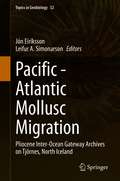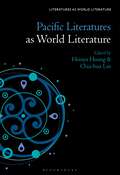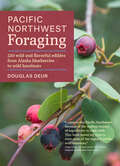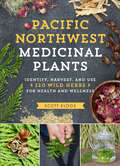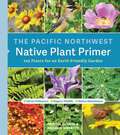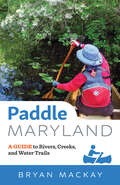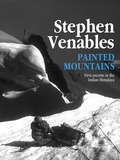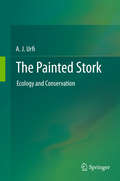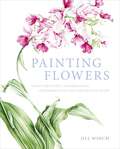- Table View
- List View
Pabay: An Island Odyssey
by Christopher WhatleyThe tiny diamond-shaped island of Pabay lies in Skye’s Inner Sound, just two and a half miles from the bustling village of Broadford. One of five Hebridean islands of that name, it derives from the Norse papa-ey, meaning ‘island of the priest’. Many visitors since the first holy men built their chapel there have felt that Pabay is a deeply spiritual place, and one of wonder. These include the great 19th-century geologists Hugh Miller and Archibald Geikie, for whom the island’s rocks and fossil-laden shales revealed much about the nature of Creation itself.Len and Margaret Whatley moved to Pabay from the Midlands and lived there from 1950 until 1970. Leaving a landlocked life in Birmingham for the emptiness of an uninhabited island was a brave and challenging move for which nothing could have prepared them. Christopher Whatley, their nephew, was a regular visitor to Pabay whilst they lived there. In this book, based on archival research, oral interviews, memory and personal experience, he explores the history of this tiny island jewel, and the people for whom it has been home, to create a vivid picture of the trials, tribulations and joys of island life.
Pacific - Atlantic Mollusc Migration: Pliocene Inter-Ocean Gateway Archives on Tjörnes, North Iceland (Topics in Geobiology #52)
by Jón Eiríksson Leifur A. SímonarsonThis volume sheds new light on the marine fauna and geological setting of the Tjörnes Sequence, North Iceland, which is a classic site for the Pliocene and Pleistocene stratigraphy of the North Atlantic region. Readers will discover descriptions of new data collected by the editors over a period of over three decades on marine faunal assemblages and sedimentology available for palaeoenvironmental reconstructions, as well as the tectonic and stratigraphical relationships on Tjörnes Peninsula. The book includes a comprehensive account of all the collections of marine fossil invertebrate macrofossils and foraminifera known to the editors from the Tjörnes Sequence. It is expected to elucidate sedimentological and faunal changes from relatively stable Pliocene conditions to highly variable and periodically harsh climatic conditions of recurring Quaternary glaciations. The distribution, recent or fossil, of various species is recorded and pertinent ecological and biological features are also discussed. The Tjörnes Sequence records the Neogene migration of Pacific species into the North Atlantic. Researchers in geology, climate science, environmental science and earth science will find this book particularly valuable.
Pacific Literatures as World Literature (Literatures as World Literature)
by Hsinya Huang and Chia-hua LinPacific Literatures as World Literature is a conjuration of trans-Pacific poets and writers whose work enacts forces of “becoming oceanic” and suggests a different mode of understanding, viewing, and belonging to the world. The Pacific, past and present, remains uneasily amenable to territorial demarcations of national or marine sovereignty. At the same time, as a planetary element necessary to sustaining life and well-being, the Pacific could become the means to envisioning ecological solidarity, if compellingly framed in terms that elicit consent and inspire an imagination of co-belonging and care. The Pacific can signify a bioregional site of coalitional promise as much as a danger zone of antagonistic peril. With ground-breaking writings from authors based in North America, Japan, Taiwan, Korea, Hawaii, and Guam and new modes of research – including multispecies ethnography and practice, ecopoetics, and indigenous cosmopolitics – authors explore the socio-political significance of the Pacific and contribute to the development of a collective effort of comparative Pacific studies covering a refreshingly broad, ethnographically grounded range of research themes. This volume aims to decenter continental/land poetics as such via long-standing transnational Pacific ties, re-worlding Pacific literature as world literature.
Pacific Literatures as World Literature (Literatures as World Literature)
Pacific Literatures as World Literature is a conjuration of trans-Pacific poets and writers whose work enacts forces of “becoming oceanic” and suggests a different mode of understanding, viewing, and belonging to the world. The Pacific, past and present, remains uneasily amenable to territorial demarcations of national or marine sovereignty. At the same time, as a planetary element necessary to sustaining life and well-being, the Pacific could become the means to envisioning ecological solidarity, if compellingly framed in terms that elicit consent and inspire an imagination of co-belonging and care. The Pacific can signify a bioregional site of coalitional promise as much as a danger zone of antagonistic peril. With ground-breaking writings from authors based in North America, Japan, Taiwan, Korea, Hawaii, and Guam and new modes of research – including multispecies ethnography and practice, ecopoetics, and indigenous cosmopolitics – authors explore the socio-political significance of the Pacific and contribute to the development of a collective effort of comparative Pacific studies covering a refreshingly broad, ethnographically grounded range of research themes. This volume aims to decenter continental/land poetics as such via long-standing transnational Pacific ties, re-worlding Pacific literature as world literature.
Pacific Northwest Foraging: 120 Wild and Flavorful Edibles from Alaska Blueberries to Wild Hazelnuts (Regional Foraging Series)
by Douglas Deur&“Doug Deur invites us to discover the taste and history of the Northwest.&” —Spencer B. Beebe, author of Cache and founder of Ecotrust The Pacific Northwest offers a veritable feast for foragers, and with Douglas Deur as your trusted guide you will learn how to safely find and identify an abundance of delicious wild plants. The plant profiles in Pacific Northwest Foraging include clear, color photographs, identification tips, guidance on how to ethically harvest, and suggestions for eating and preserving. A handy seasonal planner details which plants are available during every season. Thorough, comprehensive, and safe, this is a must-have for foragers in Oregon, Washington, and Alaska.
Pacific Northwest Medicinal Plants: Identify, Harvest, and Use 120 Wild Herbs for Health and Wellness
by Scott KloosPacific Northwest Medicinal Plants is an indispensable guide to finding, identifying, and using the wild medicinal plants of Oregon, Washington, Alaska, northern California, and British Columbia.
The Pacific Northwest Native Plant Primer: 225 Plants for an Earth-Friendly Garden
by Kristin Currin Andrew MerrittNative plants bring your garden to life—and life to your garden! Here are the best choices for Oregon and Washington. The benefits of native plants are enormous—they reduce maintenance, require less water, and attract vital, earth-friendly pollinators like birds, butterflies, and bees. Gardeners seeking to add them to their landscape will find no better guide than The Pacific Northwest Native Plant Primer. Packed with proven advice that everyhome gardener can follow, this incomparable sourcebook profiles 225 recommended native wildflowers, grasses and grasslike plants, ferns, shrubs, and trees. With additional introductory information on preparation, planting, maintenance, and climate considerations, it&’s everything you need to know to create a beautiful and beneficial garden. This must-have handbook is for gardeners in Oregon, Washington, and southern British Columbia.
Pacific Salmon & their Ecosystems: Status and Future Options
by Deanna J. Stouder Peter A. Bisson Robert J. NaimanThe symposium "Pacific Salmon and Their Ecosystems: Status and Future Options',' and this book resulted from initial efforts in 1992 by Robert J. Naiman and Deanna J. Stouder to examine the problem of declining Pacific salmon (Oncorhynchus spp.). Our primary goal was to determine informational gaps. As we explored different scientific sources, state, provincial, and federal agencies, as well as non-profit and fishing organizations, we found that the information existed but was not being communicated across institutional and organizational boundaries. At this juncture, we decided to create a steering committee and plan a symposium to bring together researchers, managers, and resource users. The steering committee consisted of members from state and federal agencies, non-profit organizations, and private industry (see Acknowledgments for names and affiliations). In February 1993, we met at the University of Washington in Seattle to begin planning the symposium. The steering committee spent the next four months developing the conceptual framework for the symposium and the subsequent book. Our objectives were to accomplish the following: (1) assess changes in anadromous Pacific Northwest salmonid populations, (2) examine factors responsible for those changes, and (3) identify options available to society to restore Pacific salmon in the Northwest. The symposium on Pacific Salmon was held in Seattle, Washington, January 10-12, 1994. Four hundred and thirty-five people listened to oral presentations and examined more than forty posters over two and a half days. We made a deliberate attempt to draw in speakers and attendees from outside the Pacific Northwest.
Pacific Voices and Climate Change
by Niki J. P. AlsfordThis book provides a comprehensive overview of issues related to climate change in the Pacific and will be an invaluable reference for those working in this important field. Climate change represents humanity’s greatest threat. The vastness of the Pacific means that no two experiences are the same. This edited volume identifies research that highlights the local impact of climate change on the islands and coastlines of the Pacific. The authors use current research to document climate change via contextually informed studies that engages with local cultures, histories, knowledges, and communities. The transdisciplinary nature and the combination of both academic and non-academic writing makes this book an accessible and important contribution to the field.
Package Price Agroecology: The Ecology of Sustainable Food Systems, Third Edition
by Stephen R. GliessmanStephen Gliessman's complementary volumes, Agroecology: The Ecology of Sustainable Food Systems, Third Edition and Field and Laboratory Investigations in Agroecology, Third Edition are now available together for one low price. Completely revised, updated, and reworked, the third edition of Agroecology presents new data, material, case studies, and options, as well as more emphasis on topics such as the values, beliefs, and ethics of sustainable food systems. The new edition of Field and Laboratory Investigations in Agroecology facilitates hands-on, experimental learning that involves close observation, creative interpretation, and constant questioning of findings.
Paddle Maryland: A Guide to Rivers, Creeks, and Water Trails
by Bryan MacKayWith the Chesapeake Bay;¢;‚¬;€?the largest estuary in the United States;¢;‚¬;€?the Potomac, Monocacy, and Patapsco Rivers, and countless streams, creeks, swamps, and marshes, Maryland is an ideal locale for people to take to the water and enjoy the natural beauty of the Free State.In Paddle Maryland, lifelong Marylander and devoted paddler Bryan MacKay presents twenty-two of his favorite canoe and kayak trips. From lazy floats down the Potomac to swamp excursions on the Eastern Shore, each trip has been selected for its incredible scenery and ample opportunities to observe nature. Included are both tidal and nontidal paddling trips, and MacKay, an ecologist, describes the wildlife and vegetation you will encounter along the way. Considering biodiversity, conservation, and climate change, MacKay also discusses what these issues mean for Maryland;€™s waterways and their inhabitants.With its beautiful illustrations and wealth of practical advice and information, this indispensable guide will appeal to all who love to explore the natural wonders of Maryland with a paddle in their hands.Paddle Maryland is a companion guide to Hike Maryland and Cycle Maryland.
Paddle Maryland: A Guide to Rivers, Creeks, and Water Trails
by Bryan MacKayWith the Chesapeake Bay;¢;‚¬;€?the largest estuary in the United States;¢;‚¬;€?the Potomac, Monocacy, and Patapsco Rivers, and countless streams, creeks, swamps, and marshes, Maryland is an ideal locale for people to take to the water and enjoy the natural beauty of the Free State.In Paddle Maryland, lifelong Marylander and devoted paddler Bryan MacKay presents twenty-two of his favorite canoe and kayak trips. From lazy floats down the Potomac to swamp excursions on the Eastern Shore, each trip has been selected for its incredible scenery and ample opportunities to observe nature. Included are both tidal and nontidal paddling trips, and MacKay, an ecologist, describes the wildlife and vegetation you will encounter along the way. Considering biodiversity, conservation, and climate change, MacKay also discusses what these issues mean for Maryland;€™s waterways and their inhabitants.With its beautiful illustrations and wealth of practical advice and information, this indispensable guide will appeal to all who love to explore the natural wonders of Maryland with a paddle in their hands.Paddle Maryland is a companion guide to Hike Maryland and Cycle Maryland.
Paint 50 Landscapes: A complete guide to painting landscapes and seascapes in watercolour
by Joe Francis DowdenA unique artist's reference offering easy-to-follow, ingenious ideas and techniques for painting 50 popular landscapes in watercolour.Originally published as The Landscape Painter's Essential Handbook, this refreshed edition gives more space to the art and brings back into print one of the cornerstone books on landscape painting from an international watercolour master.The 50 landscapes included range from a gentle flower-filled meadow and hazy summer mountains, to a dramatic cliff scene and a rippling stream in sunshine. Each landscape is explored within a hardworking spread through exercises, step-by-step sequences and easy-to-follow instructions; master the principle and technique, and finish with the watercolour painting exercise.The comprehensive introductory section covering basic materials, techniques and colours makes this an indispensable reference for all artists. From snow-covered mountains to tranquil meadows, this unique artist's reference will show you how to paint 50 glorious landscapes in watercolour.Learn the basic techniques required to paint each landscape through the clear illustrations and step-by-step demonstrationsFollow the author's practical advice and ingenious ideas to achieve the best results, and refer to his fantastic finished paintings for further inspirationUse the indispensable introduction to discover the essential materials, basic techniques and key principles for capturing landscapes.The must-have practical reference that no landscape painter should be without!!
Painted Mountains: First ascents in the Indian Himalaya
by Stephen Venables‘The mountains are crystal under the blue sky, as we climb up our untouched peak. This is why we climb.’In this fast-paced, refreshingly honest account, Stephen Venables invites you on an adventure like no other. Delving deeply into the unknown, the unclimbed and the undiscovered, Painted Mountains details the stories of two very different expeditions: the first ascent of 6,000-metre Kishtwar-Shivling in the Indian Himalaya alongside Dick Renshaw, before embarking on an Indo-British Expedition led by Harish Kapadia to Rimo: the Painted Mountain.‘Most of us are content to settle for some sort of compromise between the desire to survive and the desire to retain an element of uncertainty.’Venables – the first Briton to climb Everest without oxygen – does not shy away from the obvious challenges that come hand-in-hand with tackling expeditions such as these; this account details the highs and the lows, the dropped equipment, the toll of extreme conditions and the shining successes of reaching a summit – all while retaining a sense of humour and an unwavering enthusiasm for the thrill of the climb. Venables’ get-up-and-go attitude makes this a delightful read; he is never one to shy away from an opportunity, be it arisen from a year-long dream or a spontaneous invite.Painted Mountains is an invaluable education for anyone who is interested in the greater mountain ranges explored in this book, as well as an inspirational tale of the commitment to a dream, the birth of new friendships and the innumerable rewards of time spent in the mountains.
The Painted Stork: Ecology and Conservation
by A. J. UrfiThe book will cover the entire range of the Painted Stork--beyond its stronghold in India and Sri Lanka to other countries--E Asia as well. For the sake of comparison, relevant information will be included about the other species of storks--both solitary as well as colonial, of Asia, as well as those in other parts of the world. Certainly plenty of references will be made about the work done on the American Wood Stork. Studies are underway in order to better understand the role of the monsoon rains on the nesting pattern of Painted Stork, besides attempting a review of the global status of the species. The former is likely to be of interest in augmenting our understanding about how global climate change is going to affect birds across India and the second is likely to raise interesting points about the distribution of species and their ranges. Both these studies will be carried through 2009 and should hopefully be included in the proposed book. Naturally, the focused interest in field research on the Painted Stork has resulted in accumulation of considerable information on this particular species, which is beyond the information contained on some standard Indian and international works and ornithological texts. The author hopes to include the entire spread of information of this species--from its systematics, evolution, distribution, ecology to its role in human culture as well as its association with mythologies. In other words, topics have not been restricted to the areas of the author’s research but have spilled over into areas of anthropology, ecology, conservation, etc.
Painting Flowers: Create Beautiful Watercolour Artworks With This Step-by-Step Guide
by Jill WinchWhat could be more satisfying than producing a beautiful painting of a flower? Jill Winch is an award-winning botanical artist and has been teaching people to paint and draw flowers for many years. In this delightful book, she teaches the key skills for making successful paintings of flowers in watercolor, the medium of choice for botanical artists. She breaks the process down into manageable steps, taking examples from a wide range of flowers. Throughout the book, Jill's own beautiful paintings provide inspiration and guidance.
Painting the White House Green: Rationalizing Environmental Policy Inside the Executive Office of the President
by Randall Randall LutterPresidents, like kings, lead cloistered lives. Protecting the president from too much isolation are advisers and aides who help ensure that the administration achieves its policy goals while enjoying broad political support. In economics and environmental policy, where disagreement among stakeholders and expert opinion is especially strong, the president needs good advice about political strategy, as well as unbiased information about the substance of policy issues. It is the latter need that the Council of Economic Advisers (CEA) is intended to address. Painting the White House Green collects personal essays by eight Senior Staff Economists for Environmental and Natural Resource Policy who worked within the CEA from 1992 to 2002. These authors confirm the council's 'severe' view of many environmental initiatives, a perspective that led President Clinton to label his economic advisers as 'lemon suckers.' At the same time, they demonstrate that the emphasis on efficiency was to offer more effective environmental protection at lower cost. Thinking 'green' meant thinking consistently about both economics and the environment. The essays in this innovative book present lively debates on clean air, climate change, and electricity deregulation that pitted economists at CEA, the Office of Management and Budget, and often the Treasury Department, against political advisers in the White House and officials at EPA and other agencies. The essays present vivid portraits of the power plays involved in environmental policymaking, rare insights into presidential decisionmaking, and revealing details of the ways that economic thinking influences-or is neglected-in a wide range of policy decisions.
Painting the White House Green: Rationalizing Environmental Policy Inside the Executive Office of the President
by Randall Lutter Jason F. ShogrenPresidents, like kings, lead cloistered lives. Protecting the president from too much isolation are advisers and aides who help ensure that the administration achieves its policy goals while enjoying broad political support. In economics and environmental policy, where disagreement among stakeholders and expert opinion is especially strong, the president needs good advice about political strategy, as well as unbiased information about the substance of policy issues. It is the latter need that the Council of Economic Advisers (CEA) is intended to address. Painting the White House Green collects personal essays by eight Senior Staff Economists for Environmental and Natural Resource Policy who worked within the CEA from 1992 to 2002. These authors confirm the council's 'severe' view of many environmental initiatives, a perspective that led President Clinton to label his economic advisers as 'lemon suckers.' At the same time, they demonstrate that the emphasis on efficiency was to offer more effective environmental protection at lower cost. Thinking 'green' meant thinking consistently about both economics and the environment. The essays in this innovative book present lively debates on clean air, climate change, and electricity deregulation that pitted economists at CEA, the Office of Management and Budget, and often the Treasury Department, against political advisers in the White House and officials at EPA and other agencies. The essays present vivid portraits of the power plays involved in environmental policymaking, rare insights into presidential decisionmaking, and revealing details of the ways that economic thinking influences-or is neglected-in a wide range of policy decisions.
Palaeobiology of Middle Paleozoic Marine Brachiopods: A Case Study of Extinct Organisms in Classical Paleontology (SpringerBriefs in Earth Sciences)
by Rituparna BoseFossil species appear to persist morphologically unchanged for long intervals of geologic time, punctuated by short bursts of rapid change as explained by the Ecological Evolutionary Units (EEUs). Here, morphological variation in Paleozoic atrypide morphology at the subfamily level (Atrypinae and Variatrypinae) from the Silurian and Devonian time intervals in the third Paleozoic EEU (~444-359 my) were investigated using relatively new techniques of quantitative modeling. The study explains how a group of closely related taxa in atrypide subfamilies exhibit morphological conservation through time in P3 EEU within the Eastern North America region.
Palaeoecology of Africa and the Surrounding Islands - Volume 26 (Palaeoecology Of Africa Ser.)
by Heine KlausThis volume offers comprehensive and up-to-date information on research in many different disciplines which give an overall insight into the environmental history of Africa.
Palaeoecology of Africa and the Surrounding Islands - Volume 26 (Palaeoecology Of Africa Ser.)
by L. Scott A. Cadman R. VerhoevenThis volume offers comprehensive and up-to-date information on research in many different disciplines which give an overall insight into the environmental history of Africa.
Paleoclimate, Global Change and the Future (Global Change - The IGBP Series)
by Raymond S. Bradley Thomas F. Pedersen Keith D. AlversonThis book provides a synthesis of the past decade of research into global changes that occurred in the earth system in the past. Focus is achieved by concentrating on those changes in the Earth's past environment that best inform our evaluation of current and future global changes and their consequences for human populations. The book stands as a ten year milestone in the operation of the Past Global Changes (PAGES) Project of the International Geosphere-Biosphere Programme (IGBP). It seeks to provide a quantitative understanding of the Earth’s environment in the geologically recent past and to define the envelope of natural environmental variability against which anthropogenic impacts on the Earth System may be assessed. A set of color overhead transparencies based on the figures in the book is available free on the PAGES website (www.pages-igbp.org) for use in teaching and lecturing.
Paleoclimatology: Reconstructing Climates Of The Quaternary (PDF)
by Raymond S. BradleyPaleoclimatology: Reconstructing Climates of the Quaternary, Third Edition—winner of a 2015 Textbook Excellence Award (Texty) from The Text and Academic Authors Association—provides a thorough overview of the methods of paleoclimatic reconstruction and of the historical changes in climate during the past three million years. This thoroughly updated and revised edition systematically examines each type of proxy and elucidates the major attributes and the limitations of each. Paleoclimatology, Third Edition provides necessary context for those interested in understanding climate changes at present and how current trends in climate compare with changes that have occurred in the past. The text is richly illustrated and includes an extensive bibliography for further research. Winner of a 2015 Texty Award from the Text and Academic Authors Association A comprehensive overview of the methods of paleoclimate reconstruction, and the record of past changes in climate during the last ~3 million years Addresses all the techniques used in paleoclimatic reconstruction from climate proxies With full-color throughout, and thoroughly revised chapters on dating methods, climate forcing, ice cores, marine sediments, pollen analysis, dendroclimatology, and historical records Includes new chapters on speleothems, loess, and lake sediments More than 1,000 new references and 190 new figures Essential reading for those interested in how present trends in climate compare with changes that have occurred in the past

